#US fashion industry
Explore tagged Tumblr posts
Text

༄ " faith, love, hope " italian bracelet charms [cred: @petalsinfall ]
#͏͏ ͏͏ ͏͏ ͏͏ ͏͏ ͏͏ ͏͏ ͏͏ ͏͏ ͏͏ ͏͏ ͏͏ ͏͏ ͏͏ ͏͏ ͏͏ ͏͏ ͏͏ ͏͏ ͏͏ ͏͏ ͏͏ ͏͏ ͏͏ ͏͏ ͏͏ ͏ ͏͏ ͏͏ ͏͏ ͏͏ ͏͏ ͏͏ ͏͏ ͏͏ ͏͏ ͏͏ ͏͏ ͏͏ ͏͏ ͏͏#just girly thoughts#girlhood#just girly posts#just girly things#girlblogger#it girl#gaslight gatekeep girlboss#divine feminine#female manipulator#gaslight girlboss gatekeep#italiancharmbracelet#fashion art#fashion icon#fashion backstage#fashion industry#hell is a teenage girl#girl blog#coquette girl#girl boss gaslight gatekeep#girlblogging#girlblog#this is a girlblog#manic pixie dream girl#girl interupted syndrome#just girls being girls#pinterest girl#coquette#dollette#this is what makes us girls
1K notes
·
View notes
Text





born to be in the fashion industry, forced to go into law ♡⋆。˚
#girlhood#girlblogging#dollcore#coquette#divine feminine#dollette#female hysteria#femcel#girlblog#just girly things#whisper girl#manic pixie dream girl#lana del ray aesthetic#lana del ray aka lizzy grant#lana del rey#gaslight gatekeep girlboss#hell is a teenage girl#this is what makes us girls#this is a girlblog#im just a girl#it girl#girl interrupted#girl interupted syndrome#girlblogger#fashion industry#fashion designer#fashion marketing#fashion stylist
332 notes
·
View notes
Text









⋆.ೃ࿔*:・ . . . that's all .
#femcel#girlblogging#feminine#girl blogger#pinterest#tumblr girls#im just a girl#this is what makes us girls#female manipulator#female rage#hell is a teenage girl#fashion#the devil wears prada#miranda priestly#fashion industry#fashion inspo#fashion icon#it girl#vouge#vougemagazine#christian dior#prada#nyc girl#paris girl#france#nyc#2000s nostalgia
316 notes
·
View notes
Text
Made in the USA: Wage Theft, Fraud and Hidden Sweatshops
Unrolled twitter thread by derek guy (@dieworkwear)
4 Oct 24 • Read on X
ALT enabled on all images. Video has closed captions but is not transcribed.
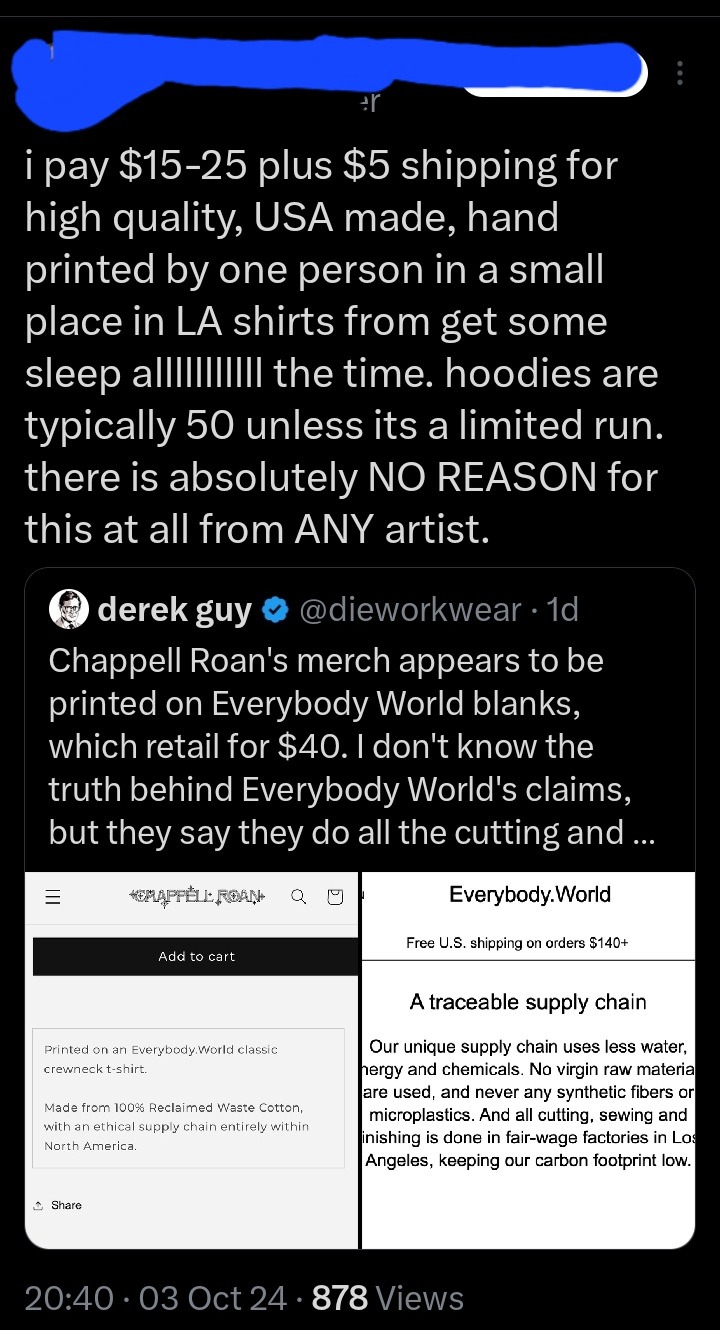
Not trying to create a pile-on here. But let's talk about why something might still be made in unethical conditions even though it bears a "made in USA" tag. 🧵
The first thing to understand is that not all workers are covered by US labor laws. You might assume that workers get paid a minimum wage (after all, it says "minimum"). In fact, many garment workers in the US toil under what's known as the piecework system.
Piecework means you get paid not by the amount of time you work but the number of operations you complete. This system should be familiar to many of you. As a writer, I get paid per word. The pay is the same whether it takes me 100 or 10 hours to write a 1,000 word article.
My situation is fine bc I get paid enough to eat. But for a garment worker, the pay structure can be peanuts: three cents to sew a zipper or sleeve, five cents for a collar, and seven cents to prepare the top part of a skirt. These are real numbers for LA-based garment workers.
Piecework is how companies skirt minimum wage laws. Among labor organizers, the term "wage theft" refers to the difference between what a worker should have earned under min wage laws and what they actually earned through the piece rate system.
This system is incredibly common. A 2016 UCLA Labor Center study showed the median piece-rate worker in Los Angeles scrapes together $5.15 per hour—less than half the state’s mandated minimum wage. Labor conditions are also very bad: poor ventilation, dusty air, rats and mice.
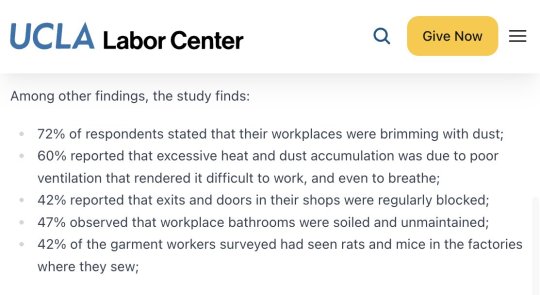
A Federal Department of Labor investigation the same year found that 85 percent of Los Angeles garment factories were breaking labor laws. In 2016, these violations amounted to $1.3 million in back wages owed to 865 workers in a sample of 77 factories. This is wage theft.
In 2021, labor organizers won a fight to get piecework banned in California. But two years later, it's still incredibly common. I interviewed an LA-based garment worker who toils 12 hrs a day for $50. She sleeps in the corner of a kitchen. From my article in The Nation:
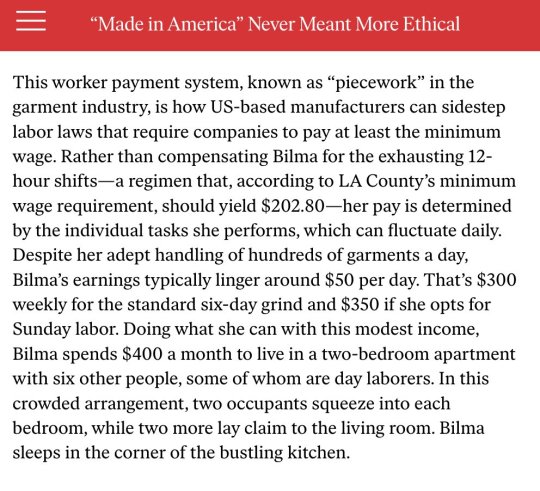
Currently, there's a new fight get piecework banned nationwide through the FABRC Act. I would link, but Twitter throttles threads that have outbound links, so I would prefer if you Google how you can support this legislation. Or follow @GarmentWorkerLA for more info.
The other reason why a "made in USA" tag may not mean much has to do with how the label is applied.
When you see this label inside your garment, what do you assume? Think about this before moving on to the next tweet.
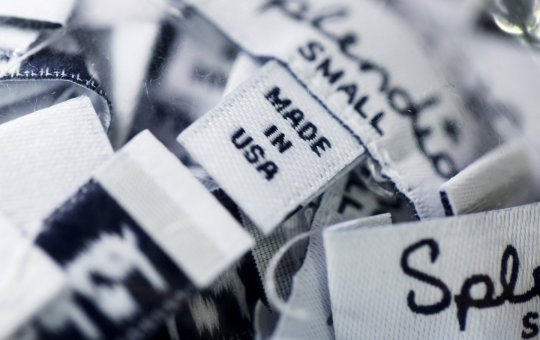
The Federal Trade Commission has pretty strict rules on who gets to apply that label. For clothes, the item has to be cut and sewn in the US using materials that were made in the US. The FTC tries to match its rules with the common understanding of what "made in US" means.
If you're a giant company like Levi's or LL Bean, you may have lawyers who are advising you on these rules. This is why you see labels like "imported," which means the item was made abroad. Or "made in the US from imported materials" when they can't meet the MiUSA standard.
But it's incredibly common for companies to violate FTC rules. In 2022, the FTC fined the pro-Trump brand Lions Not Sheep $211k for labeling their t-shirts "made in USA" when the shirts were actually imported from China and other countries.
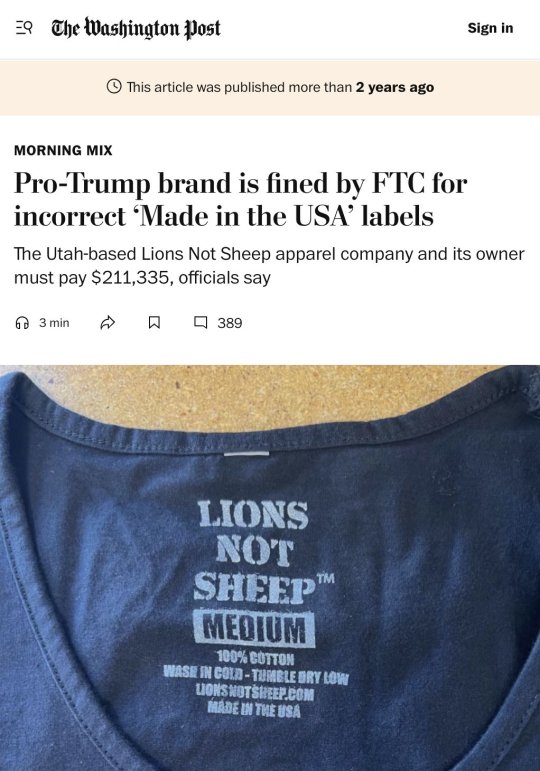
The company was basically importing blanks from China, ripping out the "made in China" label, screen printing the shirt in the US, and then applying a new screen-printed "made in US" label. CEO Sean Whalen claimed he was being persecuted for his pro-Trump views.
But the whole thing started bc Whalen made a video about how his customers are price sensitive, so he imports blanks from China. That's what kicked off the FTC investigation. So while this mislabeling is common, it's hard to get caught unless you make a video about your crimes.
The truth is that making a t-shirt in the USA according to FTC standards will result in a relatively expensive garment. Heddels and Velva Sheen both produce shirts in the US from US grown cotton. The first is $26; second is $90 for a two-pack.
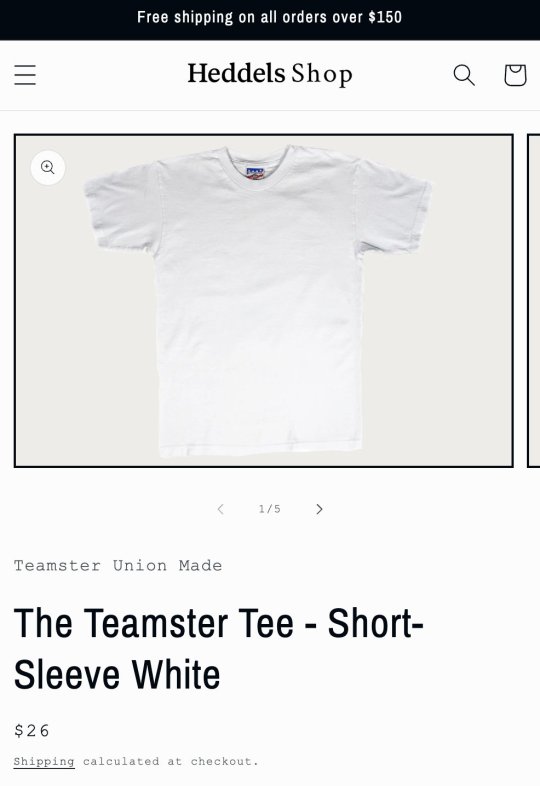
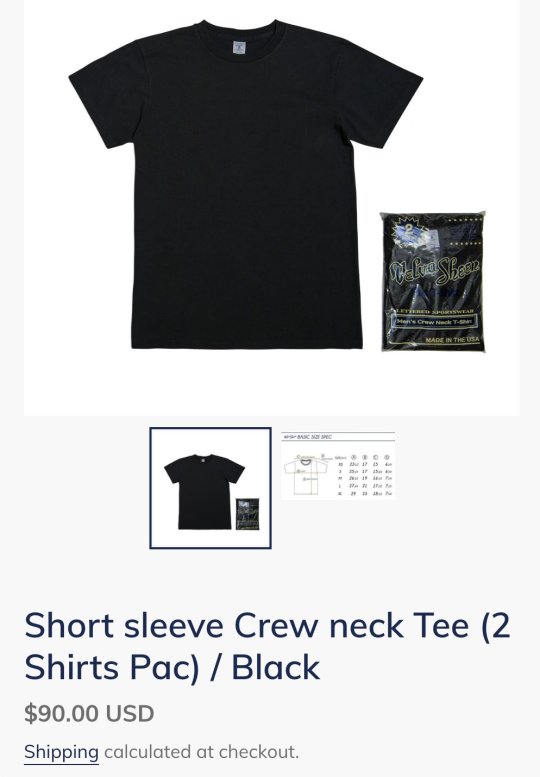
Once you add things such as screenprinting—or if you want a more unique cut and not just basic blanks—the costs go up. This is why Bikers for Trump sourced their merch from Haiti. They knew their customers would not pay an extra $8 for true made-in-USA production.
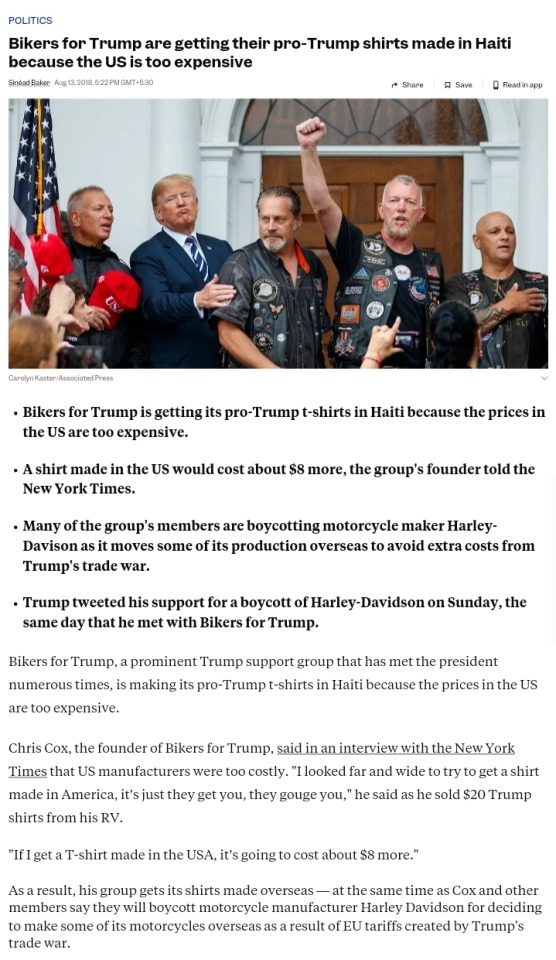
Today, there are countless companies that make merch for other organizations. They source their t-shirts from a variety of places—some made in the US, most not—and then screenprint a design and fulfill orders. This way, the other org doesn't have to do any work but marketing.
When you see a screenprinted t-shirt for $20, ask yourself: Where was the material grown? Where were the yarns spun? Where was the cutting, sewing, and finishing performed? Where was the screenprinted done? What were the wages and labor conditions along these steps?
I'm not a nationalist, so I don't prioritize American jobs over foreign ones. But I do care about fair wages and labor protections. Just because something was made abroad doesn't mean it was made in a sweatshop. Just because it was made in the US doesn't mean fair wages.

Paying more for a garment is also no guarantee of ethical manufacturing. But when the price of a garment is so low, you leave little on the table for workers. Just because you see a $20 t-shirt that says "made in USA" doesn't mean it was made fairly.
Please don't harass the person who posted that original tweet. My intention is not to cause harm or stress for anyone. Only to help shed light on what goes into garment manufacturing, fair labor, and labeling. Hopefully, you will consider these issues when shopping.
For the inevitable question: "How do I make sure my clothes were made ethically?" This is very difficult to answer in a thread. My simplest answer is that we should elect pro-worker politicians, fight for pro-labor laws, and empower unions so workers can advocate for themselves.
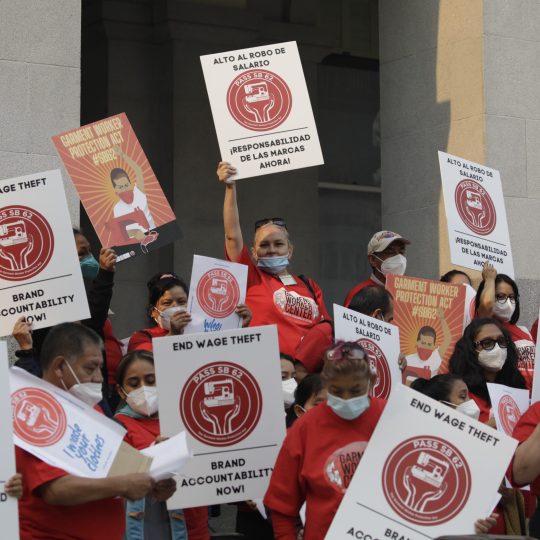
--------------------End----------------------
TL; DR: Doesn't matter if it's the US, if it's not union it's probably a sweatshop. And not all merch is priced high because of fair labour conditions (looking at Taylor Swift and Beyoncé). Look for supply chain transparency.
#sweatshops#fashion#american sweatshop#chappell roan merch#sweatshirt#chappell roan#merchandise#made in usa#garment industry#fast fashion#worker rights#labour rights#labour unions#capitalism#worker exploitation#us politics#us law#knee of huss
133 notes
·
View notes
Text
it's kinda crazy the only person on my f1 Instagram whose stories are full of pro palestine posts is Kelly Piquet
#good for her#cause all these other f1 celebs are Quiet. and Charles unfollowed that pro Palestine page he used to follow#I don't think it's a virtue signal cause she's actively losing followers and even the hadids -- the world's biggest models -- talked ab#losing job opportunities bc of being pro 🇵🇸 and Kelly wants to be within the fashion industry#people are multifaced beings if you can hate them for being wrong you can also acknowledge when they're right#kelly piquet
290 notes
·
View notes
Text











chinese guzhuang fashion
#young actress and actors are cornering the guzhuang market#that's why the industry is becoming more and more competitive#when it comes to guzhuang idol dramas/guouju古偶剧 with fantasy elements(like xianxia dramas)#cnetizens are bored with the same old faces#media has found that young actress and actors (20-27 years old) especially new pretty faces are more appealing to viewers#cnetizens can actually be mean to actress and actors (over 33 years old) cast as lead characters in guzhuang idol dramas#reasons is that lead characters are usually portrayed as teenagers or really young people#and the audience find it very weird to have middle-aged people cast such characters#especially scripts are usually adapted based on fictions#so fans of the novels would be furious about such casting#besides cnetizens want to see normal aging faces#but these shows always use excessive filters and PS#causing the midle-aged faces to be fake and weird#i once saw really mean comments on douyin for xianxia dramas casting middle-aged actress getting over one hundred thousand likes#actress and actors in zhengju正剧 guzhuang dramas or luodi落地 guzhuang dramas are not affected by this#like telling a realistic down-to-earth story or story inspired by real history or related to folks#and there is no fantasy or xianxia elements#china#fashion#chinese fashion#guzhuang#cdramas
315 notes
·
View notes
Text

“Our shitty construction of garments is a FEATURE actually, if you think that we didn’t hem this dress to cut corners you’re wrong”
#it’s a dress with a shimmering fabric and the bottom was not hemmed#would look awful frayed#not cool in an intentional way no#just BAD#I’ve seen more garments with tags like this#like thanks for telling me straight up that your garment is shit quality at least#I didn’t take a picture of the whole dress which I should have#frays on the end would NOT be a feature#they just didn’t want to hem it and try to convince us it’s cool actually#hey now I’m a marketer I know what you’re doing#garment construction#fashion industry#Ellen talks
28 notes
·
View notes
Text
"If I lived back then I simply would not support slavery" bestie you get most of your clothes off Shein
#shien#fast fashion#slave labor#like not even going into all the slave labor used in the coffee and chocolate industries#smart phones cars clothes shoes
26 notes
·
View notes
Text
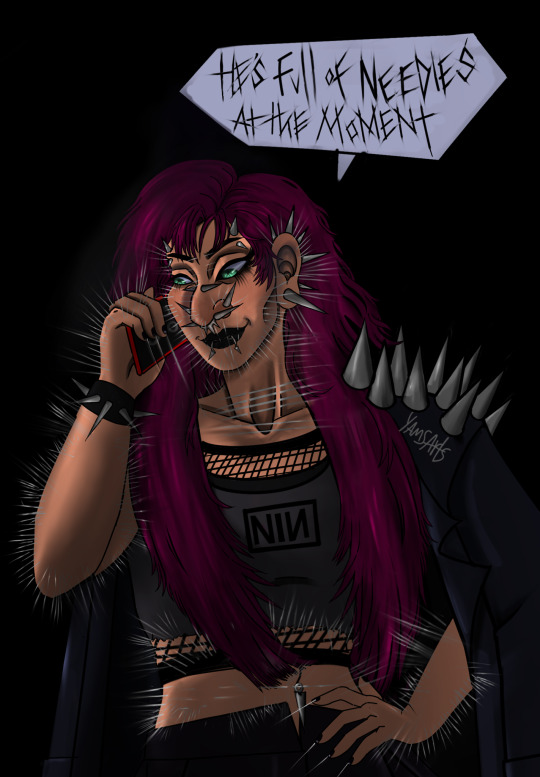
needles is so babygirl
#tmagp#needles tmagp#tmp fanart#tmagp fanart#needles tmp#my art#my refs for his design included both og and new pinhead from Hellraiser#I also looked at industrial goth n punk fashion to figure out what to dress him in#honestly he activates the part of my brain that loves Hellraiser#yes hes wearing a nine inch nails shirt#I thot it would be extremely funny#I want to draw him being bfs w tma Gerry and Michael#goth 4 goth hrs#also when designing him I tried to use a lot of sharp angles#I saw a documentary where they were talking about how clowns paint with round shapes to not be scary#so I kind of wanted to try and challenge myself by mostly using like sharp angles for him#also I just love the idea of him having like a razor cut mullet#needles tw#@everyone: I love all ur needles designs hes perfect
21 notes
·
View notes
Text





Kate Moss for Alberta Ferretti 1993.
#90s#girl blogging#girl blog#girl blogger#this is what makes us girls#lana del rey#photography#fashion#kate moss#90s fashion#kate mess#kate moss 90s#fashion girl#fashion industry#90s runway#runway#90s supermodels#super model#supermodel#models#90s models#angelcore#angel#dollete
7 notes
·
View notes
Photo

Petite is Beauty✨
#to all my petite ladies out there#if you wanna jump to my insta i talk bout the fashion industry#and how us petites are very excluded and how it's so wrong#artists on tumblr#art#original art#angels#digital art#tisart
153 notes
·
View notes
Text


Pic of me at my last gig and a shot I took on a early morning walk a couple days ago
#punkblogging#me#selfie#I mean not really but I named my tags poorly#industrial fashion#goth#girls like us#butch lesbian
90 notes
·
View notes
Text


US Vogue September 1, 1961
Leather Industries of America Fall/1961
vogue archive
#us vogue#september 1961#fashion 60s#fall#automne#leather industries of america#vintage advertising#vintage fashion#vintage vogue
8 notes
·
View notes
Text
Tagging my interests on this post so I can have more fandom mutuals >_< teehe!!!
(There’s way more I need to add I might make a part 2?)
#nixie talks#srmthfg#super robot monkey team hyperforce go#among us logic#max design pro#jack off jill#my ruin#babes in toyland#Pierce the veil#pinky and pepper forever#pokeronpas#fanganronpa#genitorturers#riot grrl#riot goth#goth#grunge#nu Metal#industrial metal#emo#Midwest emo#rabbits#monkeys#hole#alternative#alternative metal#alternative fashion#alternative rock#screamo#Emily the strange
7 notes
·
View notes
Text
fell in the trap of wondering why Beyoncé won album of the year and had to grab me by my shoulders and remind myself that nicki minaj hasn’t won a single grammy ever
#sorry to break it to anyone#brat WAS the album of the year simply because it dominated pop culture for an entire summer and beyond#brat defined so much of 2024 fashion internet trends memes even political freaking discourse in the US#masterclass in marketing and a highlight in the music industry#grammys#music ramblings
4 notes
·
View notes
Text
Like we'll never make proper progress bc too many women have internalised misogyny and are quite happy with it bc they see their successful conforming to gender roles as something they should be proud of and other women's "unsuccessful" conforming as something to shame. Why? My assumption is bc they also don't want to have to conform 24/7 and are bitter when confronted with women who have decided they won't bother anymore. I like to think that bc then there's at least some hope for them.
#it could also just be ''if i conform and hate like a man then i'll be successful despite the patriarchy'' but#idk i hope it is just a misguided envy and want to break free from societal expectations#i get it. i wish i didn't feel like i have to put on make-up too but it's baby steps#i took it off now and i'll see my bf without it even tho i feel like i don't look ''good enough'' for a bare face but#it's my natural face and it's always good enough#but anyway and this successful conforming as a point of pride?#let me be controversial. it's bc you all fell for the beauty industry's rebranding into#''self-care and self-expression'' and are now fully convinced it's a choice that is never influenced by anything#other than what the woman wants. make-up is fun and a way to express yourself so that woman who doesn't do it#must just not be able to do it how sad and pathetic lol#but it's not self-care of self-expression if you're using it to change your natural appearance#i am only pro-make-up if it's used to emphasise or genuinely have fun but i don't trust the world with it at all so#idk. i kinda grew to like slathering my cheeks and nose in pink glittery blush bc i like to look cutesy#but i hate feeling like i have to use concealer. etc etc.#one is a fashion accessory one is ''i need to look perfect at all times bc society expects that from me'' and THAT is what we need less of
16 notes
·
View notes